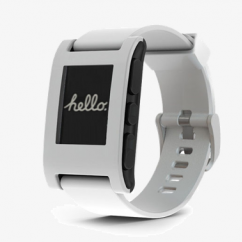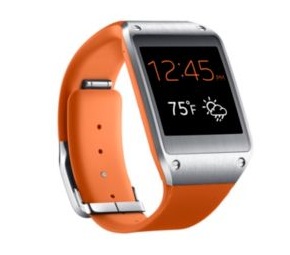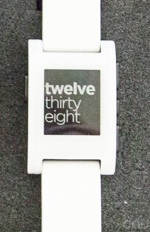Articles and News
Consumers OK With High-Tech Jewelry, But They Don’t Expect Jewelers To Sell It | May 14, 2014 (0 comments)

Paso Robles, CA—With technology companies like Samsung already in the market with a timepiece, and rumors of an Apple iWatch continually swirling, what do consumers actually think about wearable technology? And is a watch the only way to wear it?
In many ways, consumers—especially luxury watch collectors—have been wearing technology for a long time. Complex mechanical timepieces with moon phase indicators, diving or aviation timers, and the like are technological marvels, even if they’re not battery-powered. And throughout history, various gemstones, metals, and talismans have been believed to possess healing properties or promote wellbeing.
When a recent survey by MVI Marketing asked consumers whether or not they’ve heard of wearable technology (yes, most have), and whether they’d wear it (yes, if it looks like jewelry first), it indicates this is a category worth watching. After all, the next generation of jewelry consumers is more technologically advanced from a younger age than any generation before it.
Out of 608 respondents, the overwhelming majority said they’d be most likely to wear technology on their wrist—55% in the form of a watch, and 27% as a bracelet or a wristband. Rings followed, with 6% of respondents saying they’d wear one, then necklaces/pendants (4%), and, lastly, earrings (3%). The survey also asked about implants, but only 2% of respondents agreed they’d be willing to try that.
Twice as many respondents said they’d go out and purchase a new piece of technology jewelry/watch, vs. getting an add-on to put onto an existing piece they own, but more than half said that in order to drive them to buy it, it has to “look like fine jewelry that has some technology hidden in it,” as opposed to the 28% who preferred something that looks high-tech but is wearable. 19% would wear it either way.
Samsung positions its Galaxy smart watch as just one of many size ways to apply personal technology. And Apple may well need to either hurry up or skip the category altogether, unless they’re cooking up something so radically new that mere mortals can’t even conceive of it yet, because in addition to Samsung’s attractive Galaxy watch, there already is at least one other worthy contender on the market.


The Samsung Galaxy watch, left, and Pebble steel, right. Another Pebble watch is shown top of page.
Consider the Pebble Steel, a $249 wristwatch that is compatible with both Android and iPhone. The Pebble—crowd-funded by a record-setting $10.26 million Kickstarter campaign and lauded by Wired magazine as one of the 10 best new gadgets at this year’s Consumer Electronics Show—is both stylish and smart. Obviously lots of consumers think so, too: according to its page on Kickstarter.com, it has almost 69,000 backers and raised more than 100 times its initial goal of $100,000.
Earlier Pebble models were somewhat reminiscent of 1970s digital clunkers, but its latest offering is not only sleek but its apps can alert the wearer to calls, messages, navigation, social media, and even where to go for lunch, all without having to fish out a phone. Not surprisingly, the watch face can be customized. Its battery purportedly lasts five to seven days per charge, and it’s water resistant to 5 ATM.
MVI’s survey shows that when it comes to actually acquiring such a device, few respondents would think about heading to their local independent jeweler to find it. Among the available choices presented, only 20% of respondents thought they’d be able to find wearable technology at an independent jewelry store (the survey didn’t say they didn’t want to shop there, only that they didn’t expect to find the product there.) Mall jewelers fared slightly better—34% said they would expect to find the product there. But really, most would head to Radio Shack or the like—55% of respondents felt a technology specialist would be the most likely merchant for such products.
If they’re going to buy wearable technology, respondents said the most important attributes are that it be durable and easy to use.
The survey was equally split among men and women age 35 and under; 23% of total respondents listed their household income from all adults at $75,000 or above; of those, only 10% have HHI above $100,000.
It might not be a luxury market yet--but, as experts in the luxury watch field have noted, anything that turns consumers on to watches is a good thing because it will bring new customers in without alienating those who already have a passion for luxury timepieces.







